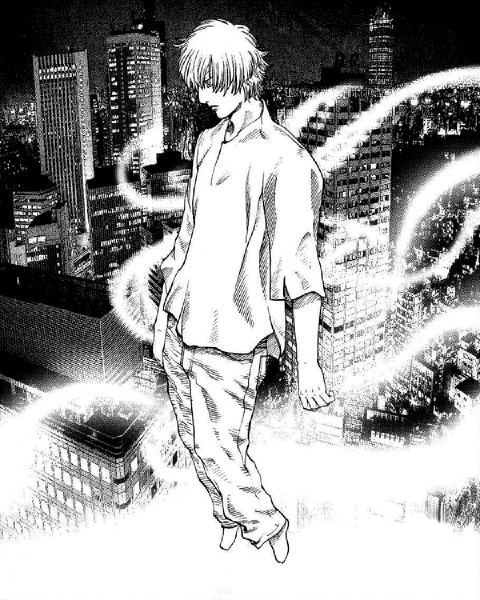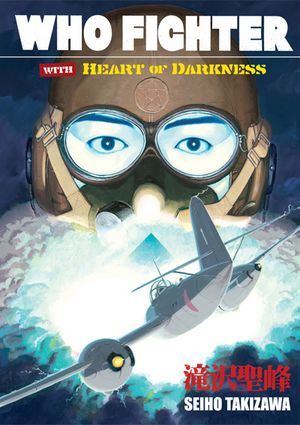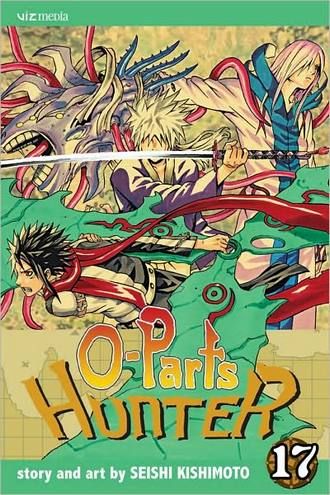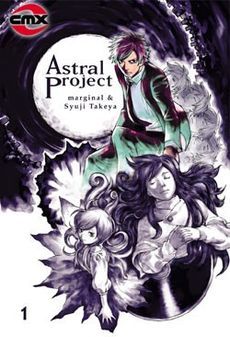For lack of a better term, this is the fringe edition. All three titles for this week deal with conspiracies and new age topics. Notably, most of these themes are western in origin, so it can be fun to take a look at a manga version of... say, out of place artifacts, or UFO conspiracy theory. All three of these are also older titles, and most flew under the radar, so it's worth taking a second look.
Who Fighter With Heart of Darkness - Seiho Takizawa (1 volume)
This volume flew so far under the radar that not even I knew it came out. This volume tells three stories in the weird war tradition, all set in WWII. The second story is an adaptation of Joseph Conrad's Heart of Darkness (also, inherently Apocalypse Now-ish). A colonel goes rogue in Burma and sets up his own private army deep in the jungle, and a captain sent to execute him finds strangeness. The third story, Tanks, isn't WWII specific, but takes a look at the history of armored vehicle battles. The first story, Who Fighter, is what ties this volume into the theme. "Who fighter" in this case is meant to be "foo fighter," which was a slang term pilots used to refer to UFO-like fireballs that were spotted during WWII. A pilot sees one and shoots it down, and begins to find himself driven gradually insane by an outside force. The story draws heavily from UFO mythology, including such elements as crop circles, alien greys, and the Mothman. Unfortunately, I have not read this volume myself, but the first story in particular is said to be rather surreal and worth the price of admission. Takizawa is reasonably popular in Japan as an author of works similar to this, and the art and storytelling are apparently very close to the style of Katsuhiro Otomo (Akira). His art is more realistic, especially his character designs (though his backgrounds aren't nearly as ornate as Otomo), and his stories have an action-packed, but claustrophobic feel to them. Released in 2006 and still available new, I'd venture a guess that it didn't fare so well in stores. But it is a very unusual volume (realistic war stories like these are uncommon in English-language manga), and worth seeking out if the story appeals to you.
O-Parts Hunter (aka 666 Satan) - Seishi Kishimoto (19 volumes)
A pretty standard action-fantasy series, this one barely qualifies for the article theme. It did introduce me to the term OOPArt (out-of-place artifacts), which is a pseudo-archaeological term that refers to items found in impossible contexts, ie too technologically advanced for the sites they were discovered at. Most major discoveries have been disproven, but the conspiracy persists. In the context of this series, OOPArts are magical items hidden in ancient ruins that can be utilized by O.P.T., or O-Parts Technicians, that unlock mysterious fighting powers, either light or dark. The series starts when a young archeologist meets up with Jio Freed, a lad who wishes to conquer the world. When threatened by an O.P.T. that claims to be "Satan," the most powerful O.P.T. dark user, Jio unlocks his powers and reveals himself to be the real Satan. And it goes on from there with Jio and the archeologist accumulating many friends and going on to fight bad guys along the way. The O-Parts magic used by the characters leans heavily on Kaballastic and Judeo-Christian symbology, which looks and sounds cool, but likely doesn't have much relation to what the symbols actually mean. I've only read the last 5 volumes, and while it has a quirky sense of humor and a pretty elaborate and unusual battle system, it didn't stand out among its action-fantasy brethren. It was published by Square-Enix, who normally does less generic action-fantasy than Shounen Jump, and it's a decent series with a lot of good ideas, and at 19 volumes, not interminably long. Square-Enix series also tend to have better art, and in this case Kishimoto uses some pretty imaginative designs and a lot of fun quirks and details. It's also always worth pointing out that Seishi Kishimoto is the twin brother of Masashi Kishimoto, the artist of Naruto. O-Parts Hunter is still in print and available in English, and is likely another that was completely overlooked when it came out.
Astral Project - Story by Marginal, Art by Syuji Takeya (4 volumes)
This series is about exactly what you would expect. The main character, Masahiko, suffers a loss when his sister dies of heart failure. But he suspects her death was actually a suicide, as she was under a lot of pressure from their parents. As a keepsake, he takes the CD she has in her CD player. It turns out to be a Jazz compilation by Albert Ayler, and he has an out-of-body experience while listening to it. The 4 volumes are spent with Masahiko finding the limits to his astral projection, finding out whether the CD causes the phenomenon in others (people and not-people), finding others who astral project in other ways, and finding astral entities that merely exist, and are not actually projecting. It's heavily implied his sister's death is tied into astral projection, but that thread never quite works itself out. Heavily existential themes pervade the series, and one of my favorite points made is that modern society is breaking because there is no longer any rite of passage, and that geeks are essentially the most socially broken and spiritually robust of Earth's inhabitants, and became this way by following the example of the United States. The fourth volume goes heavy into modern philosophy, and discusses how materialism replaced religion in Japan after WWII, and that consumerism replaced religion in the US when all the immigrants were forced to conform. It goes into government conspiracies about astral projection as part of the plot in later volumes as well. It's quite heavy handed and a mess in terms of straightforward story, but I never found the philosophical points to be too convoluted, and I quite enjoyed the strangeness of all four volumes. The art is detailed and quite groovy, and can switch between incredibly detailed to strangely abstract depending on what's going on. Marginal is a pseudonym for Garon Tsuchiya, who also wrote Old Boy. Published by CMX, the imprint took Astral Project with it when it
went under, but used copies aren't difficult to find.





